 |
Picks is a monthly sampling of Japan's art scene, offering short reviews of exhibitions at museums and galleries in recent weeks, with an emphasis on contemporary art by young artists. |
 |
 |
 |
1 December 2009 |
 |
| 1 | 2 | |
 |
|
 |
 |
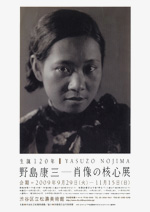 |
|
| Yasuzo Nojima: Essence of Portraits |
| 29 September - 15 November 2009 |
Shoto Museum of Art
(Tokyo) |
 |
| An impressive commemoration of the photographer's 120th birth anniversary, this retrospective reminds us that Nojima (1889-1964) was not only an extremely earnest, almost naïve practitioner of photography as a serious art form, but also a bit of a dilettante, a rich boy with money and time to spare. The show's companion anthology of works and other materials by Nojima, including letters and essays he wrote both before and after World War II, is a significant contribution to the study of his life and work. |
|
|
 |
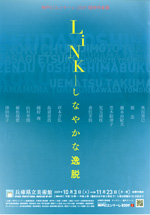 |
|
| Kobe Biennale 2009: LINK - Flexible Deviation |
| 3 October - 23 November 2009 |
Hyogo Prefectural Museum of Art
(Hyogo) |
 |
| The Hyogo Museum is one of several venues for the Kobe Biennale, which highlights the unique arts environment of the Kobe/Kansai area. Twelve contemporary artists have been invited to participate, with notables including Yukio Fujimoto, Osamu Kokufu, Etsuko Kasagi, Michihiro Shimabuku, Takuma Uematsu, and Yukinori Yamamura. The range of genres and generations is expansive, as is the overall scale of the exhibition, with numerous paintings, sculptures, photographs and installations on display. |
|
|
|
|
|
|
 |
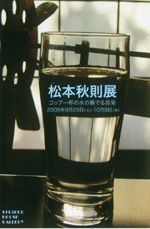 |
|
Akinori Matsumoto: Music Played by a Single Cup of Water |
| 29 September - 8 October 2009 |
Striped House Gallery
(Tokyo) |
 |
| Installation artist Matsumoto has arranged four or five vertically-sliced bamboo tree trunks in a haphazard sequence, each with a waterwheel-like contraption (also of bamboo) attached. When a cup of water is poured into the first trough, it sets the wheels in motion, striking and eliciting sounds from the bamboo or plucking strings en route. Made intentionally of non-uniform parts, this primitive-looking "instrument" produces some unique and surprisingly subtle "music." |
|
|
|
|
|
|
|
 |
|
| Hitoshi Abe + Masashige Motoe: MEGAHOUSE |
| 30 September - 11 October 2009 |
Gallery Raku, Kyoto University of Art and Design
(Kyoto) |
 |
| MEGAHOUSE is "a lifestyle proposal for inhabiting the entire city as if it is one enormous house." Practically speaking, it is a system that uses the latest video-monitoring technology to let consumers choose from among vacant living "spaces" scattered around a city. In this presentation, the gallery is filled by an animated city panorama with an on-screen catalog from which visitors select the "product" they want for a simulated live-in experience. It's a lot like buying something on Amazon.com, and the flashy, commercial mood of the show seems to be a drippingly ironic commentary on consumerism. |
|
|
 |
|
 |

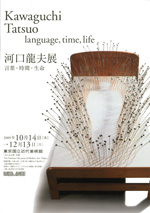 |
|
Tatsuo Kawaguchi: Language, Time, Life |
| 14 October - 13 December 2009 |
The National Museum of Modern Art, Tokyo
(Tokyo) |
 |
|
Applying light or heat to materials that range from iron, copper, lead and other metals to fossils, plants, seeds and soil, veteran sculptor Kawaguchi (b.1940) has consistently created works that explore the invisible relationships between matter and matter, or matter and human beings. This retrospective gathers together over four decades of his work, juxtaposing both old and new creations under the categories "Matter and Language," "Time," and "Life."
|
|
 |
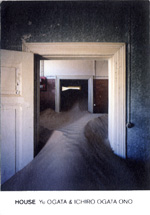 |
|
Yu Ogata and Ichiro Ogata Ono: House |
| 16 October - 2 November 2009 |
Foil Gallery
(Tokyo) |
 |
|
"House" brings together three series of photographs by the architect/photographer couple -- abandoned, sand-filled houses in Namibia, western-style villas in China, and dovecotes in Greece. All of these images are unfamiliar: desert ghost towns, relics of the once-flourishing Namibian diamond industry; gaudy Chinese mansions built in the middle of nowhere with money made overseas; elaborate stone houses built to attract pigeons on the Aegean island of Tinos. The photos do indeed reflect a sharp architectural eye, not only for the beauty of vernacular structures, but in their composition.
|
|
|
|
|
|
|
|
|
|
 |
|
Ryuji Miyamoto: The grass, bugs and sea |
| 18 September - 17 October 2009 |
Taro Nasu
(Tokyo) |
 |
|
Asid from one pinhole photo of the sea, the show consists of a large number of photograms made by placing bugs, birds, and blades of grass directly on photographic paper and exposing them to light. The insects -- white silhouettes on a black background -- include cicadas, bees, dragonflies, mosquitoes. Curiously, only the cicadas appear face-up; the others are all face-down, lined up in vertical rows. Miyamoto says he originally wanted to stack them perpendicularly, like Romanian sculptor Constantin Brancusi's "Endless Column."
|
|
|
|
 |
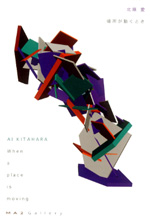 |
|
Ai Kitahara: When a Place is Moving |
| 16 September - 17 October 2009 |
MA2 Gallery
(Tokyo) |
 |
|
Kitahara creates her sculptures in the shapes of national and other borders. Here she sets her sights on the unique architectural spaces of the MA2 Gallery itself -- twisting, demolishing and reconstructing them. Works on display range from an earlier series of forms based on France's borders with adjacent countries, to a skateboard in the shape of Tokyo Prefecture. The latter is amusing for its fragility and the fact that it appears unlikely to work up much speed.
|
|
|
|
|
 |
|
 |
|